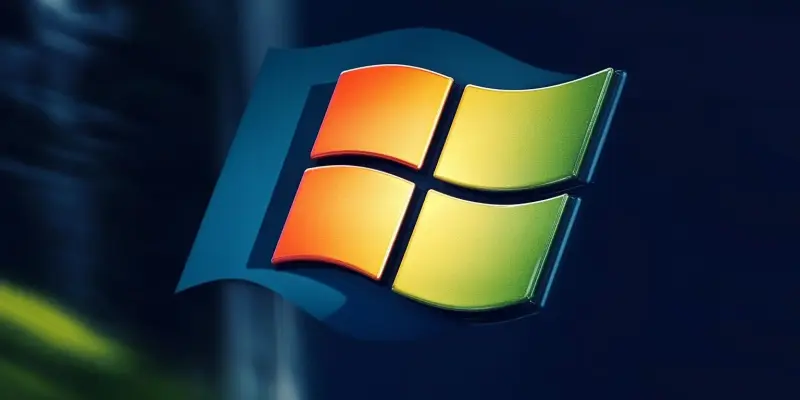A significant security flaw in Microsoft Windows has been exploited by state-sponsored hackers for several years, impacting critical infrastructures and high-profile targets globally. Unpatched since its discovery, the vulnerability has been documented as ZDI-CAN-25373 by Trend Micro’s Zero Day Initiative (ZDI), allowing attackers to execute hidden malicious commands on a victim’s system through specially crafted Windows Shortcut (.LNK) files. This vulnerability, actively exploited since 2017, demonstrates the long-term threats that can persist when security flaws remain unaddressed.
Exploitation Techniques and Impacts
Mechanism of Attack
The zero-day vulnerability leverages .LNK files containing hidden command line arguments to deploy malicious payloads covertly. Attackers craft these shortcuts to appear benign, but they harbor commands that trigger malware execution. Security researchers Peter Girnus and Aliakbar Zahravi have brought attention to the sophistication of these .LNK files, which embed arguments obfuscated with characters like Space, Horizontal Tabs, Line Feeds, Vertical Tabs, Form Feeds, and Carriage Returns. Such obfuscation techniques significantly hinder detection by traditional security measures, making the attacks more insidious.
The principal actors exploiting this flaw include 11 state-sponsored threat groups from nations such as China, Iran, North Korea, and Russia. These actors have utilized nearly 1,000 identifiable malicious .LNK specimens in their campaigns. Notable groups like Evil Corp, Kimsuky, Konni, Bitter, and ScarCruft have been linked to these operations, targeting a diverse range of sectors including government agencies, private enterprises, financial institutions, think tanks, telecommunications providers, and defense establishments. The impact of these attacks has been felt across multiple countries, including the United States, Canada, Russia, South Korea, Vietnam, and Brazil, highlighting the global scale of the threat.
Specific Target Sectors
Primary targets of these exploits encompass sectors with high-value data and critical operational roles. The government agencies and military organizations in the affected countries have been prime targets, facing risks of espionage and data breaches that could compromise national security. Financial institutions also present lucrative targets due to the potential for monetary theft and fraud. These attacks extend to private entities and think tanks, where intellectual property and strategic data can be extracted to gain competitive or geopolitical advantages.
The telecommunications sector has seen significant targeting, as control over communication infrastructure can lead to broader systemic vulnerabilities. Cybersecurity firm Evil Corp notably weaponized this vulnerability to distribute infamous malware like Raspberry Robin. Such malware, including Lumma Stealer, GuLoader, and Remcos RAT, delivered through these .LNK files, are designed to steal sensitive data, provide remote access, and evade detection mechanisms. The success and breadth of these attacks underscore the indispensable need for vigilance and advanced defensive measures in these sectors.
Response and Containment
Microsoft’s Position
Despite the severity and prolonged exploitation of the flaw, Microsoft has classified it as low severity and has not issued an immediate fix. The company categorizes the vulnerability under User Interface (UI) Misrepresentation of Critical Information (CWE-451), implying that the Windows UI fails to accurately convey critical information to users. In their acknowledgment of the issue, Microsoft pointed out that their Defender system is equipped with detections to block this threat, emphasizing the role of smart cybersecurity measures.
Microsoft advises caution when downloading and opening files, particularly from unverified sources, to avoid falling victim to .LNK file-based exploits. The company also highlighted existing defenses such as Microsoft’s Smart App Control and blocking mechanisms for .LNK files across various Windows platforms. These tools are designed to provide additional layers of security to preemptively counteract potential threats posed by malicious files. However, the decision not to release an immediate patch raises questions regarding the balance between perceived threat severity and actual impact.
Current Security Measures
In light of Microsoft’s stance, the emphasis on security has shifted towards user awareness and existing defensive tools. Organizations are encouraged to implement stringent security protocols, including regular software updates, comprehensive endpoint security solutions, and advanced threat detection systems. Firewalls, intrusion detection systems, and continuous monitoring are critical in recognizing and blocking suspicious activities linked to this specific exploit method.
Cybersecurity experts stress the importance of educating users about the dangers of opening files from unknown sources. Employee training programs can be pivotal in recognizing and reporting phishing attempts, which often serve as delivery vectors for .LNK-based attacks. Encouraging a culture of security awareness and vigilance can significantly mitigate the risks posed by such vulnerabilities.
Looking Ahead
A significant security flaw in Microsoft Windows has been exploited by state-sponsored hackers for several years, targeting critical infrastructures and high-profile entities worldwide. Known as ZDI-CAN-25373 and documented by Trend Micro’s Zero Day Initiative (ZDI), this vulnerability allows attackers to run hidden malicious commands on a victim’s system using specially crafted Windows Shortcut (.LNK) files. Despite its discovery, the security flaw has remained unpatched, exposing systems to risks. Since 2017, this exploit has been in active use, highlighting the persistent threats that can exist when security vulnerabilities are left unaddressed. The fact that this issue continues to pose risks underscores the importance of timely security updates and patches to protect essential systems against potential attacks. Consequently, organizations must prioritize cybersecurity measures and stay vigilant about emerging threats to safeguard their operations.

